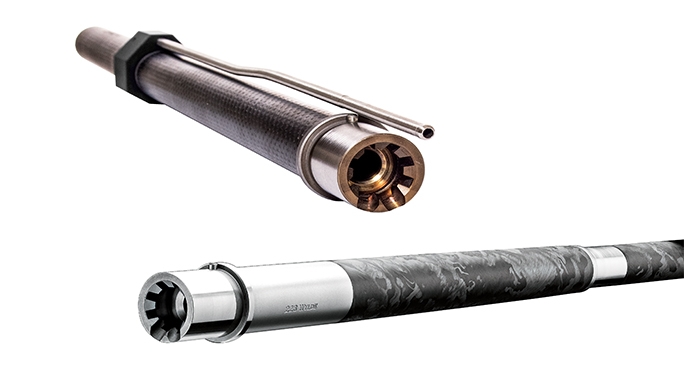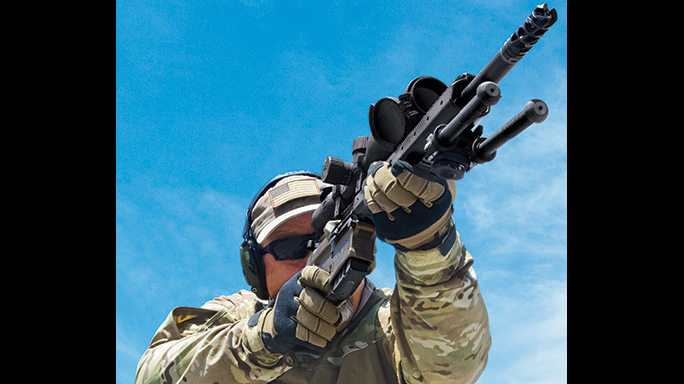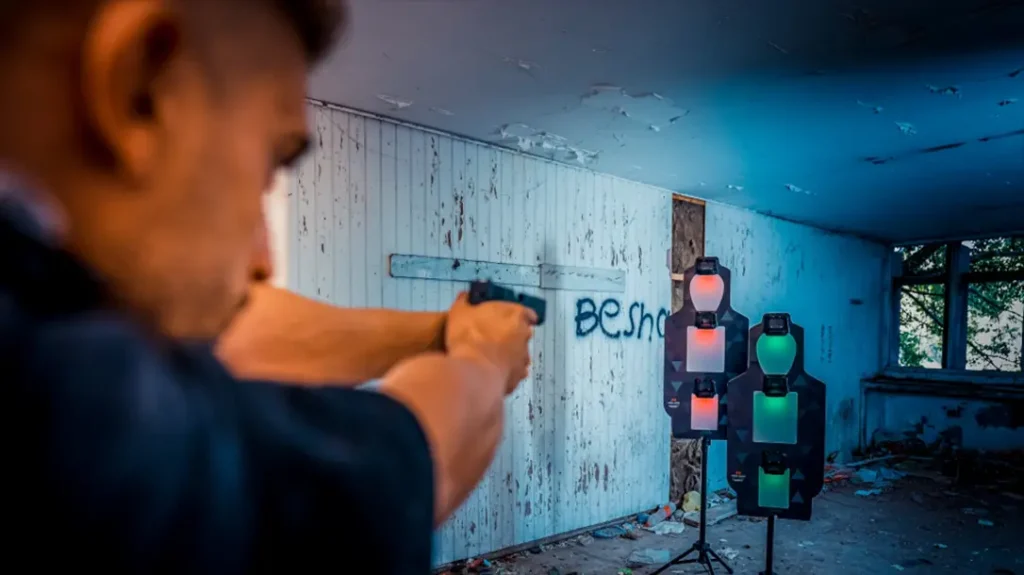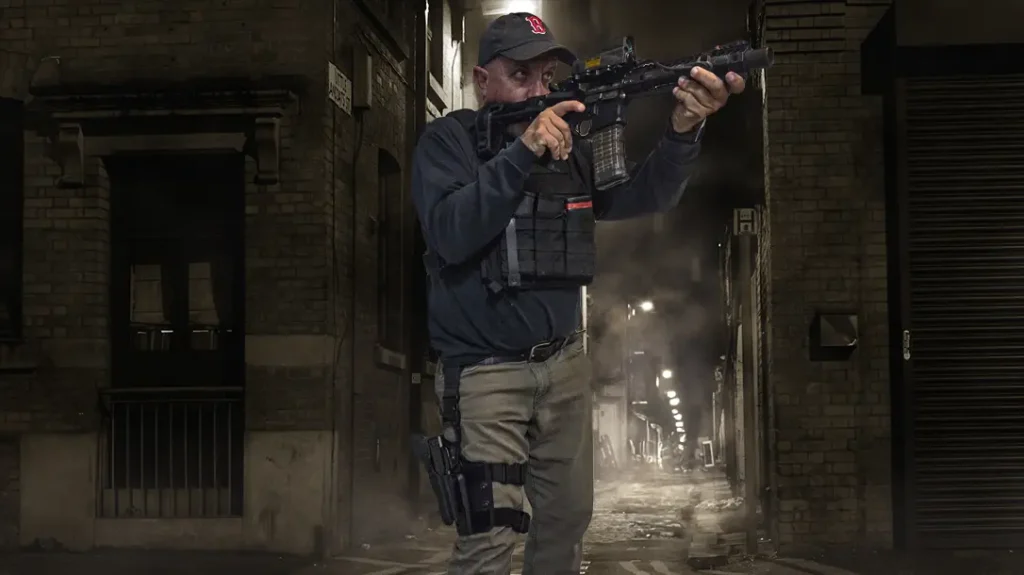Reduce a bolt rifle to its basic parts and most of the rifle’s weight is in the barrel, followed by its action.
Actions can be made of titanium, but most are steel and limit your ability to shave off weight. Move to an AR, however, and that is not the case. AR receivers are already made of aluminum and are very light—and they’re getting lighter and stronger every year. This means the best place to save weight is in the barrel.
- RELATED STORY: 9 Pieces of Gear From the Cover of Ballistic Fall 2015
AR barrels can be swapped with a few simple tools, making them a great option for all builders, custom or otherwise. Fluting, different tapers and other modifications can be made to steel barrels to reduce weight, but they all come with their own set of compromises. Carbon-fiber-wrapped barrels offer an alternative, and depending on caliber, length and taper, it can shave pounds off an AR, not just ounces.
Advertisement — Continue Reading Below
It’s critical to understand “carbon” barrels are carbon wrapped, not all carbon, and that they start with a steel barrel. The quality of the steel barrel determines its accuracy. Wrap carbon around a substandard barrel and you will be disappointed. Early carbon-fiber-wrapped versions did just that, resulting in less-than-promising accuracy and, in some cases, reliability issues.
You have to start with a quality steel barrel blank to get the best accuracy. This is why the many manufacturers, such as ones like Proof Research and Christensen Arms, build their own steel barrels now. Each tapers and builds their barrels to ensure the best “mating” of the carbon fiber. It’s a process, not a covering, and the steel barrel remains the heart of the process.
Each company’s manufacturing process is incredibly proprietary and highly guarded. In touring their manufacturing plants, you are not likely to see the carbon-wrapping process. In my experience, the process is accomplished somewhat differently with each company. Part of that process is the contour and how they terminate at each end. How the wrapping process occurs, as well as the makeup of the carbon, determines how heat from the steel is dissipated, the expansion controlled and the adhesion of the carbon ensured. If any of this breaks down, you get problems. Accuracy may suffer, groups may open up or spread under rapid fire and cold-bore shots can wander. When done correctly, however, none of this occurs, but that is the magic and what adds to the cost.
Advertisement — Continue Reading Below
Going The Distance
My latest precision rifle build has been incredible. Mating a 20-inch, 6.5mm Creedmoor Proof Research barrel to my Seekins Precision receivers resulted in one of the lightest and best-balanced precision ARs I’ve ever built. Most who pick it up can’t believe it is full sized in a powerful caliber. Working around barricades and odd positions, the difference in balance is immediately evident. The rifle’s accuracy rivals many very high-dollar bolt rifles, and the barrel remains cool in the hot sun, under load and during rapid fire. If I add a suppressor, it dissipates heat quickly. Velocity loss is kept to a minimum during long-range shooting, and if you’re forced to carry it all day you really notice the difference in weight.
Many top 3-Gun competitors are starting to see the value in carbon-wrapped barrels. Moving between multiple targets, the ability to control “swing” is critical. Barrel weight is also hugely important in these conditions. These competitors are separated by tenths or even thousandths of a second. Add these differentials up over the course of a few stages and it can make a big difference, which is why carbon-wrapped barrels really shine here. After being tested over thousands of rounds a season under very harsh conditions, they are proving to be excellent and winning often. In sports where every advantage is taken, these types of barrels offer faster times with less fatigue while remaining incredibly accurate.
Advertisement — Continue Reading Below
Entry teams like the ability to shave weight without needing a short barrel. Use a short barrel and add a titanium suppressor and you get the best of both worlds. For those units that spend a lot of time moving in and out of an area, the ability to maintain accuracy while saving a pound or more of weight may be important. Weight is everything to operators these days, and shaving it off means more ammo on board or just less fatigue when you get to the target.
Extreme Performance
In the last few years, I’ve tested carbon-wrapped barrels in numerous calibers and various lengths on bolt rifles and ARs from the best-known builders today. None have failed, even under some pretty harsh conditions. There is no hesitation on my part to count on them in any realistic environment. Nothing is perfect, and over the years many high-dollar steel barrels have been less than stellar, but carbon-wrapped barrels have been no worse and in some cases better.
Advertisement — Continue Reading Below
There is always a downside, and so far that comes in the form of cost. Carbon-wrapped barrels can be very expensive, as much as three times the cost of a comparable barrel. If weight does not matter, the cost is likely prohibitive. But if weight savings is imperative, the barrels can be a game-changer. Moving to a carbon-wrapped barrel on my 6.5mm Creedmoor, 26-inch-barreled bolt-action rifle shaved almost 3 pounds of total weight when using a similar contour.
If you are looking at a custom build or just want to own a truly lightweight tack driver for home defense or hunting, take a look at carbon-fiber-wrapped barrels. They may just be exactly what you need, and they’re only getting better and less costly each year.

























